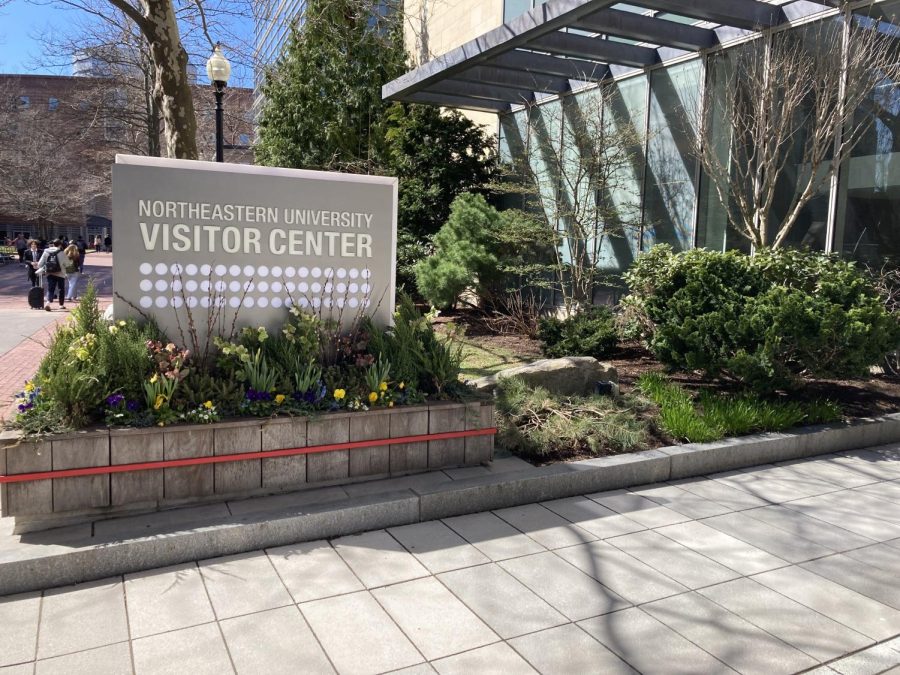Northeastern acceptance rate drops to 6.7%
This past application cycle saw more than 90,000 applications to Northeastern, with the acceptance rate dropping to 6.7% for fall 2022.
April 21, 2022
For the class of 2026, Northeastern was more selective than ever.
Of the record-large pool of 90,989 applicants, only 6,179 were admitted, or about 6.7%, Northeastern spokesperson Shannon Nargi wrote in an email statement to The News April 12.
“You’ve got more people wanting to go, and you’ve got less spots offered, so naturally that’s going to drive [the acceptance rate] down,” said Dennis Simmons, an incoming mechanical engineering student from Heath, Massachusetts. “It’s just a significant change.”
The acceptance rate, a steep drop from 18% for the class of 2025, comes after concerns of overcrowding and over enrollment. The target enrollment for the class of 2026 is about 2,500, according to Nargi, which is about 1,000 lower than the usual enrollment goal to combat over-acceptance from last year’s applicants. With 15,000 additional applicants this year, that drove down the acceptance rate even further.
The increasing selectivity of the university has prompted mixed reactions from both current and incoming students. Some have a positive outlook, relieved that Northeastern is taking steps to address overcrowding and excited that Northeastern is becoming a more competitive school.
“To me, this drop means a hopeful reprieve from the overcrowding everyone seems to talk about,” said Reese Cantu, an incoming American Sign Language Early Decision admit from Phoenix, Arizona. “I don’t see Northeastern as any more prestigious, but I hope employers do.”
Nate Hoffman, a fifth-year computer science major, had a similar perspective.
“I think it’s great — when I came in, [the acceptance rate] was 28%,” Hoffman said. “So now, I’m like, ‘I go to a competitive school.’”
Northeastern’s 6.7% acceptance rate this year matches that of other prominent elite universities. Massachusetts Institute of Technology admitted about 4%, with Tufts following behind with 9%. Northwestern University matched Northeastern’s acceptance rate for the first time, with Northwestern seeing a 7% rate.
Other students see the lowered admittance rate as problematic. Jensyn Ford, a first-year communication and media studies combined major, referred to it as a “marketing tool.”
“This is a good school, but it’s not that good,” Ford said. “I feel like it’s almost negatively affecting the school, because they’re just gaming the system and being unfair to applicants.”
Julia Towne, a first-year communication studies major, said she thinks the university’s limited housing is to blame for the lowered acceptance rate. Towne currently lives in East Village, and her double room may be converted into a triple next year.
“It makes sense because I know they were struggling to find housing for everyone,” Towne said. “Also, they don’t include N.U.in [in the acceptance rate], so it’s like Northeastern is gaming the results, which is a little bit scummy.”
Northeastern’s spike in applicants comes in the second year of the university implementation of a test optional policy. SAT and ACT scores have not been required since the start of the COVID-19 pandemic.
“I think it’s pretty crazy; now that they took SAT and ACT scores out of the picture, I’m honestly confused how they’re distinguishing between so many applicants,” said Lizzie McClennon, a third-year biology major.
Northeastern also has no supplemental essay requirement on the Common Application, unlike many other competitive universities.
“You’re getting applicants who might not even really want to go, they’re just like, ‘Oh Northeastern is a good school, I’ll just mark it and see if I get in,’” said Maddie Ford, a first-year economics major.
Simmons, who recently committed to Northeastern, thought it would be a good idea to implement supplemental essays to gauge interest.
Though Simmons said he was “proud” of his acceptance, he added that “there’s probably at least another 20 or 30% who are equally qualified.”
“When there’s so many extremely well qualified applicants, at a certain point it becomes a lottery,” Simmons said. “It’s the luck of who reads your application.”


















